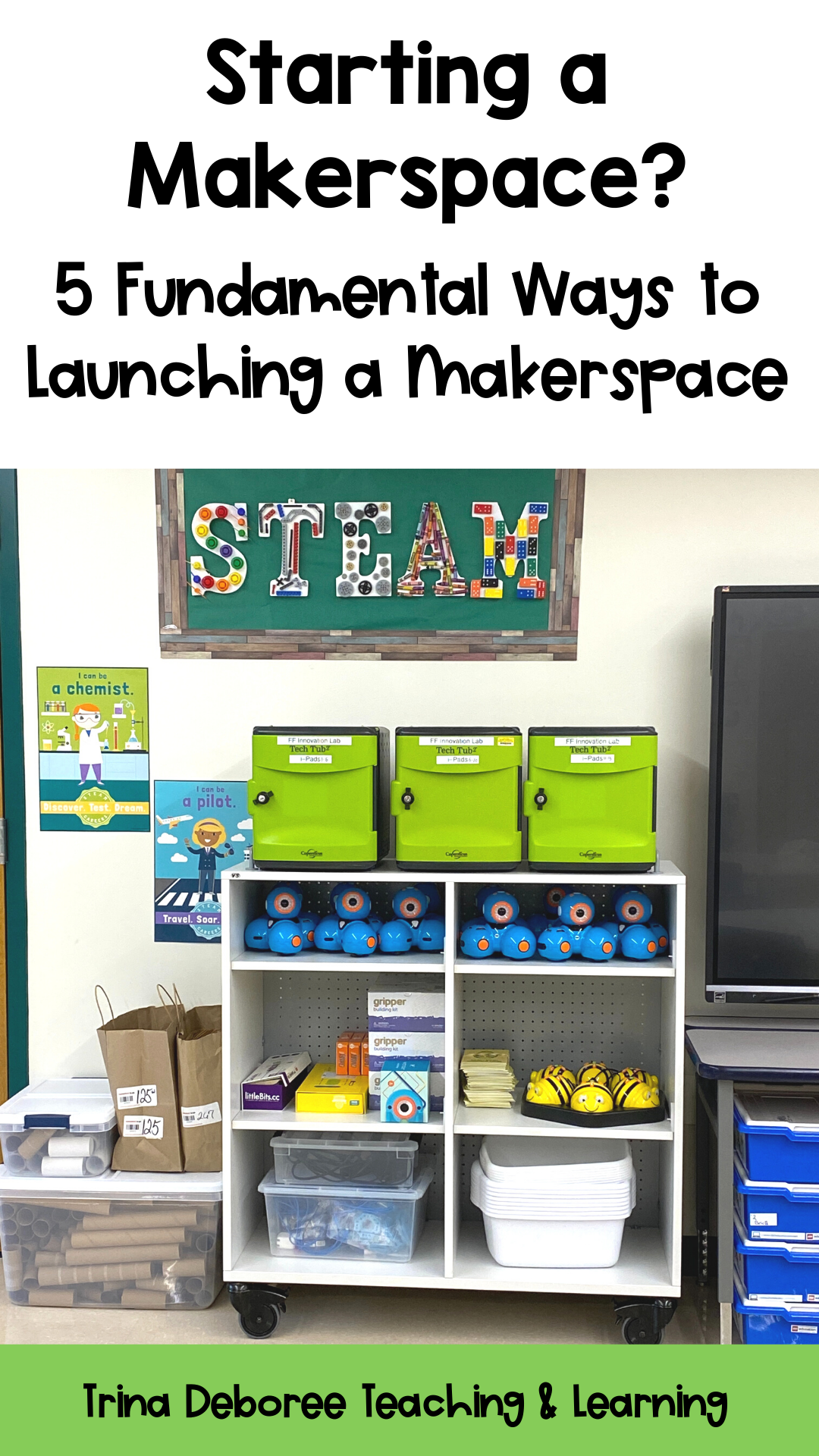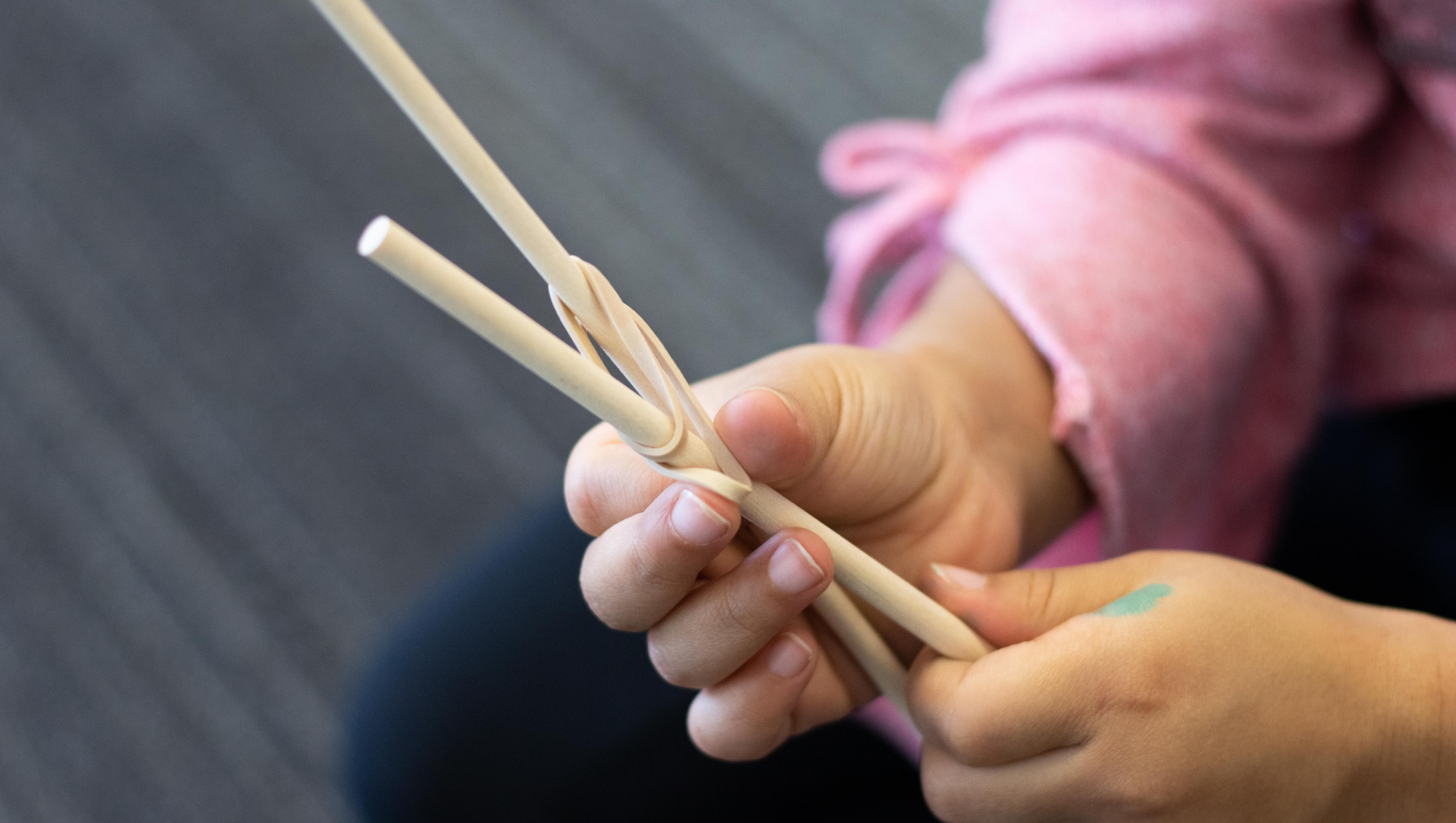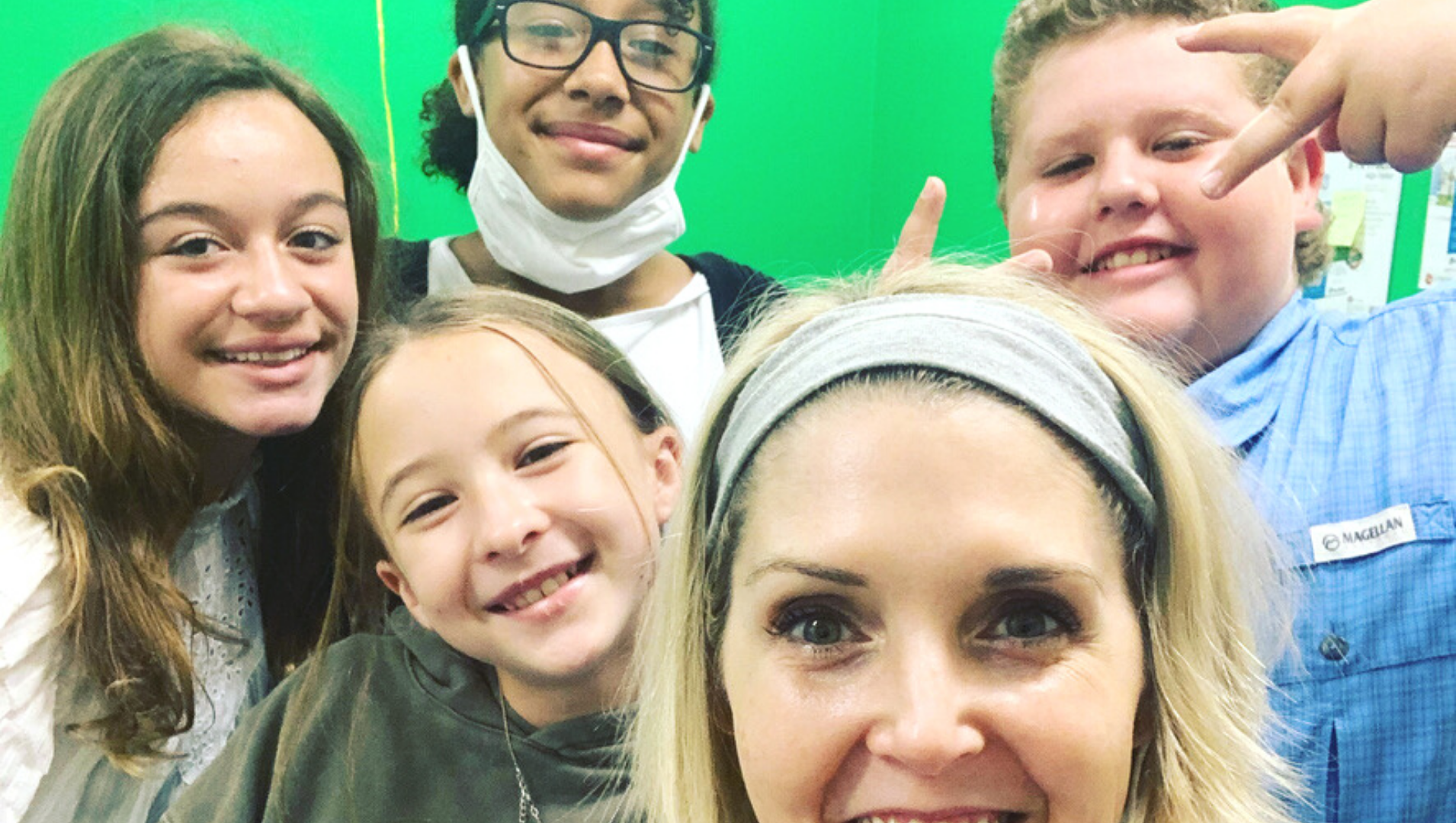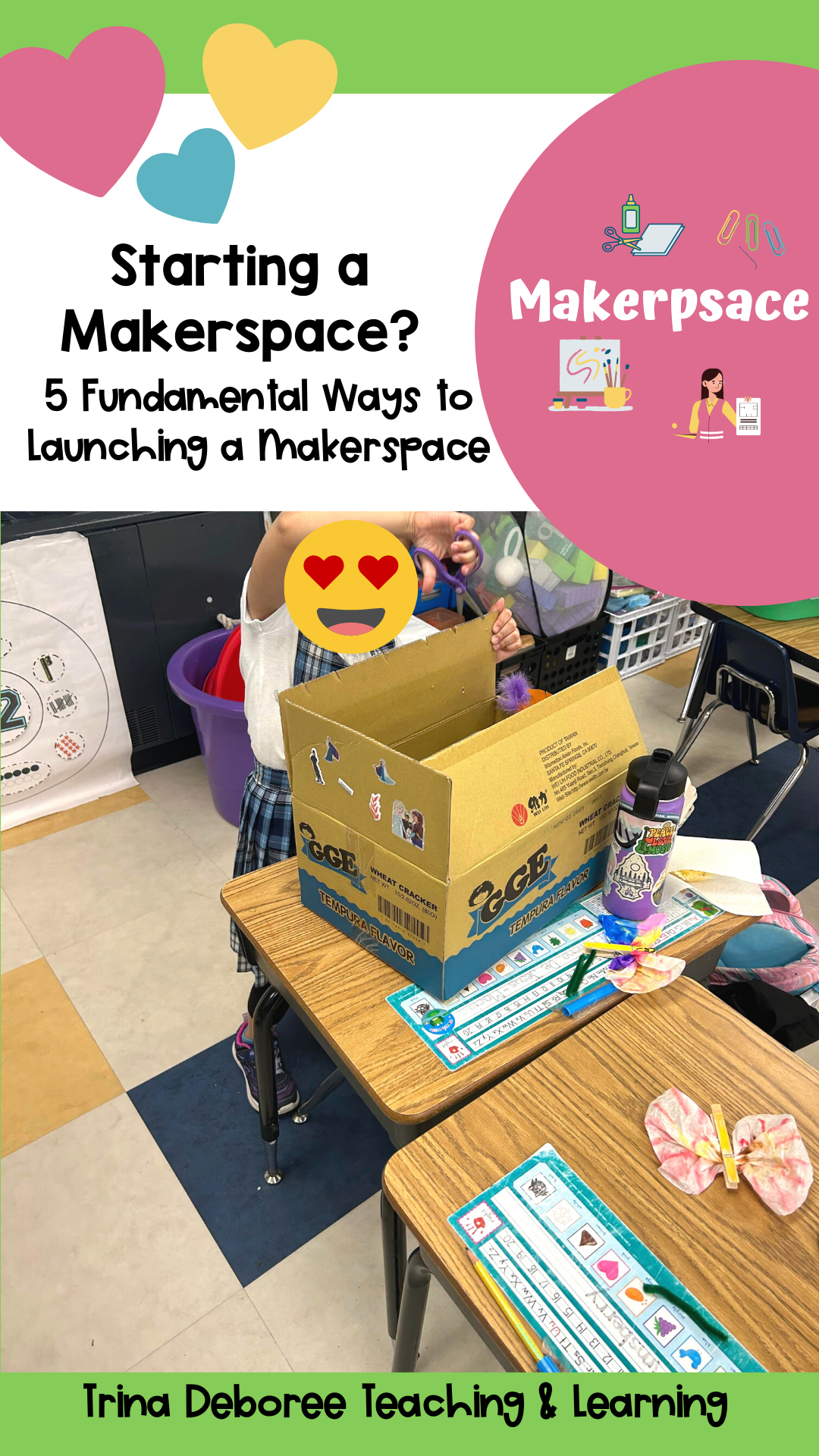Starting a Makerspace? 5 Fundamental Ways to Launching a Makerspace
Are you a maker at heart?
Do you believe innovation and creativity should be nurtured and encouraged in future generations? Do you want to foster a collaborative space and be integral to the maker movement? You should consider starting a makerspace in your classroom, media center, or homeschool classroom!
But hold on now, before you start gathering up all the duct tape and cardboard boxes in sight, let's take a moment to discuss the fundamental ways or the best way of launching your very own makerspace. From defining what exactly is a makerspace to building an engaged community around it, I've got you covered. So grab your thinking caps (or hard hats if you're feeling extra creative), and let's start with creative thinking!
What is a makerspace, and why it's important?
Are you tired of the same old classroom routine? Do you want to inspire creativity and innovation in your students? Look no further than the makerspace! A makerspace is a collaborative workspace where students can design, build, and create using various tools and materials. From 3D printers to simple materials, there are countless ways for young people to explore their interests and passions.
This is one of my favorite quotes from Laura Flemening from Worlds of Making, explaining Makerspace.
A makerspace is a metaphor for a unique environment that encourages tinkering, play, and open exploration for all.
Laura Flemening from Worlds of Making
But why are classroom makerspaces or school makerspaces in a common area so crucial for education? For starters, it allows students to approach learning in different ways. Instead of simply reading from a textbook or listening to teachers sharing content, kids can problem-solve and experiment with hands-on activities. This helps them retain information better and encourages critical thinking skills that will serve them well beyond the classroom. Plus, by working together on projects, they learn valuable communication and collaboration skills that will benefit them in any future career path they choose.
Want more reasons why every classroom should have a Makerspace? Tune into One Tired Teacher Episode 30: Every Classroom Needs a Makerspace.
Determine goals:
Welcome to the exciting world of makerspaces! You've decided to launch a makerspace in your classroom or school library, but before you dive into all the glitter and glue guns, it's essential to determine your goals. After all, you want your makerspace to be a manageable free-for-all where students are just cutting and pasting aimlessly.
The first step is to identify how your makerspace will benefit the community. Will it be a space for students to explore their creativity? A place for collaboration among peers? Or an opportunity for hands-on learning that caters to various learning styles? You can ensure that your makerspace has purpose and direction by pinpointing these goals. So you will want to give your why a lot of thought and consideration; after all, you are thinking about new things, a new space, and new ideas, all focused on the maker mindset.
Identify objectives and outcomes for your makerspace.
First things first: consider how your makerspace can support your goals and objectives. Do you want to focus on STEM? Or are you looking for a way to integrate content more efficiently and creatively? If you are focusing on STEM, consider what skills are necessary for success in this field and consider how you can incorporate them into your makerspace activities. And remember, it's not all about the hard skills - soft starts (activities that promote social-emotional learning) can also help build confidence and collaboration among students.
Remember to integrate content, too! Makerspaces shouldn't be just another activity on top of the existing curriculum but rather a way to enhance it.
Also, focusing on the design process can be so powerful for your community members or students in the maker culture.
Design the space:
As schools worldwide embrace a more hands-on approach to learning, creating a makerspace is a no-brainer. But before you start gathering all materials or tools, let's discuss determining the space for your classroom or school library makerspace. Don't worry; it doesn't have to be rocket science – it can even be simple. I promise.
First things first, assess your available space. You don't need to be an interior designer to determine if your room is large enough for a makerspace. Just make sure there's enough room for students to move around comfortably without elbowing each other in the face. And if you're struggling with space constraints, consider making your makerspace portable! Who says innovation has to be stationary?
When it comes down to it, creating a makerspace should be simple. And it doesn't have to be. Makerspace isn't necessarily about SPACE. It is more of a mindset. So you can use what you already have in place.
Some solutions to a lack of space are containers or tubs of materials that can be taken out and then put away. Portable Makerspace on carts works too. The suitable space might just be outside! The possibilities are indeed endless.
I also recommend that you make it simple in the beginning. The goal is to improve the learning conditions in your classroom, NOT overwhelm yourself or give yourself more work. Less really is more in this case.
Choose equipment and tools:
As a student, have you ever felt the frustration of wanting to work on a project but not having access to the necessary equipment and tools? Fear not, makerspace enthusiasts! Your school library or classroom makerspace is here to save the day, and it doesn't require high tech tools to get off the ground. With a bit of creativity and resourcefulness, your makerspace can be outfitted with everything you need for your next big idea.
First things first: keep it simple. You don't need fancy gadgets, gizmos, and tech tools like 3-D printing machines, hand tools, or laser cutting to create something unique. In fact, some of the best inventions come from using basic materials in unique ways. Even art equipment will do! Better yet, recycled materials are both easy to find and free! So feel free to return to basics and experiment with everyday items like cardboard boxes or paper clips. All new tools will spark the creative side of students.
Next up: keep everything simple. The beauty of a makerspace is that it allows you to explore your creativity without any limitations - so why add unnecessary complexity? And the best part is you want a variety of maker equipment, especially in creative learning. Different materials provide new opportunities for kids to think critically and intentionally, especially in the initial creation stages.
Need a jumping-off point? Grab my list of getting-started tools and materials for your makerspace by clicking the link below.
Build community:
As the saying goes, "It takes a village to raise a child." And in today's fast-paced and ever-changing world, problem-solving skills are more critical than ever. Luckily, there's a solution: build community in your makerspace!
By fostering an environment where students can come together to solve problems and work on projects collaboratively, you're building their problem-solving skills and creating lifelong learners who will undoubtedly contribute significantly to society.
Still, trying to figure out where to start? Try hosting regular maker events or workshops focusing on specific problems or challenges. Encourage students of all abilities and backgrounds to participate, and feel free to mix it up with different topics each time. With the right approach, your makerspace could become a hub for innovation and creativity!
Engage students, teachers, and parents in the makerspace culture.
Getting others involved is a good idea and can be the most important thing you do to ensure a successful makerspace. You can join makerspace groups on Facebook for support and ideas. Another idea is to follow maker educators on Instagram. I talk about makerspace on my Instagram feed. You can find me at @trina_deboree.
Gone are the days of textbook learning. Maker educators believe in hands-on experiences that allow students to apply their knowledge in real-life situations, focus on design challenges and best practices with design projects, and more. Incorporating makerspaces into schools encourages creativity and teaches essential skills such as problem-solving, critical thinking, and teamwork. Plus, it's an opportunity for teachers to step out of their comfort zone and explore new teaching methods. Can you say open-ended exploration for all?!
But why stop there? Let's get parents involved too! Why not invite parents out for maker night?! Getting parents involved can often ensure that admin doesn't get in the way of innovation and exploration. (Giving them some scholarly research can help too!)
Funding sources:
Are you looking to fund your classroom or library makerspace? Well, you're in luck! Many funding sources are out there waiting for you to reach your goal. Whether you're looking to start a makerspace or upgrade an existing one, keep reading for some simple suggestions.
First up, have you heard of the Maker Education Initiative? This organization provides grants and resources for schools and libraries seeking to establish maker spaces and fab labs. They offer support ranging from $1,000 mini-grants to multi-year partnerships worth up to $50,000 - now that's a lot of glue sticks!
Another source of funding is DonorsChoose.org. This innovative website allows teachers and librarians to post project requests for items they need in their classrooms. Friends, family members, and strangers can donate directly to those projects.
It also never hurts to reach out to your families. They often love saving toilet paper rolls or boxes from Amazon. Reach out and ask.
Conclusion: Wrapping up the benefits of launching a makerspace.
In conclusion, launching a makerspace in the classroom or library is an excellent way to foster student creativity and innovation. By providing them with the tools and resources to explore their ideas and turn them into reality, we are preparing them for a bright future full of possibility and opportunity. So what are you waiting for?
Don't be afraid to take the leap and start your own makerspace today! Your students will thank you for it, and you'll be amazed at what they can accomplish when given a chance to unleash their imaginations. Remember, the sky's the limit when it comes to making!
Want more information on Makerspace? Join my Makerspace Bootcamp!
















